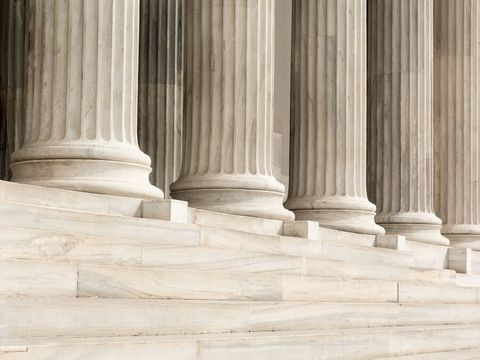Trump Administration Announces New Interim Final Rules to Tighten Visa Requirements for High Skilled Foreign Workers
Client Alert | 1 min read | 10.14.20
New interim final rules published by the Department of Homeland Security (DHS) and the Department of Labor (DOL) on October 8, 2020 will make it significantly more difficult for highly skilled foreign workers to meet the eligibility criteria for the H-1B visa application.
The new interim final DOL rule requires employers to pay much higher wages to H-1B employees. Currently employers must pay the higher of the actual wage level paid to other workers with similar experience and qualifications or the “prevailing wage” level for the occupational classification as determined by the DOL Occupational Employment Statistics (OES). Depending on the wage level, the OES wage minimums which currently are between 17 to 67 percentiles, will be raised to 45 to 95 percentiles under the new DOL rule. This increase effectively raises the wages sponsors of H-1B visas have to pay to obtain employment-based immigration visas for their foreign employees.
The new interim final DHS rule changes the definition of a specialty occupation for the H-1B visa to require a more direct link between the foreign worker’s educational degree or equivalent amount of experience and the specialty occupation for the H-1B visa. It is also expected that the new rule will limit the ability of H-1B worker hired by one company to work for another company as such arrangements will receive stricter scrutiny. Site inspections of H-1B workplaces may also increase as the new rule officially authorizes such site inspections from the U.S. Citizenship and Immigration Services, even though the agency has been conducting site inspections for many years.
These DOL rule take effect immediately on October 8, 2020, but DOL will accept public comments for 30 days. The DHS rule will take effect after a 60-day public comment period.
Taleen DeArcangelis, partner at DeArcangelis & DeArcangelis, Attorneys at Law, also contributed to this alert.
Contacts
Insights
Client Alert | 5 min read | 12.12.25
Eleventh Circuit Hears Argument on False Claims Act Qui Tam Constitutionality
On the morning of December 12, 2025, the Eleventh Circuit heard argument in United States ex rel. Zafirov v. Florida Medical Associates, LLC, et al., No. 24-13581 (11th Cir. 2025). This case concerns the constitutionality of the False Claims Act (FCA) qui tam provisions and a groundbreaking September 2024 opinion in which the United States District Court for the Middle District of Florida held that the FCA’s qui tam provisions were unconstitutional under Article II. See United States ex rel. Zafirov v. Fla. Med. Assocs., LLC, 751 F. Supp. 3d 1293 (M.D. Fla. 2024). That decision, penned by District Judge Kathryn Kimball Mizelle, was the first success story for a legal theory that has been gaining steam ever since Justices Thomas, Barrett, and Kavanaugh indicated they would be willing to consider arguments about the constitutionality of the qui tam provisions in U.S. ex rel. Polansky v. Exec. Health Res., 599 U.S. 419 (2023). In her opinion, Judge Mizelle held (1) qui tam relators are officers of the U.S. who must be appointed under the Appointments Clause; and (2) historical practice treating qui tam and similar relators as less than “officers” for constitutional purposes was not enough to save the qui tam provisions from the fundamental Article II infirmity the court identified. That ruling was appealed and, after full briefing, including by the government and a bevy of amici, the litigants stepped up to the plate this morning for oral argument.
Client Alert | 8 min read | 12.11.25
Director Squires Revamps the Workings of the U.S. Patent Office
Client Alert | 8 min read | 12.10.25
Creativity You Can Use: CJEU Clarifies Copyright for Applied Art
Client Alert | 4 min read | 12.10.25
Federal Court Strikes Down Interior Order Suspending Wind Energy Development




